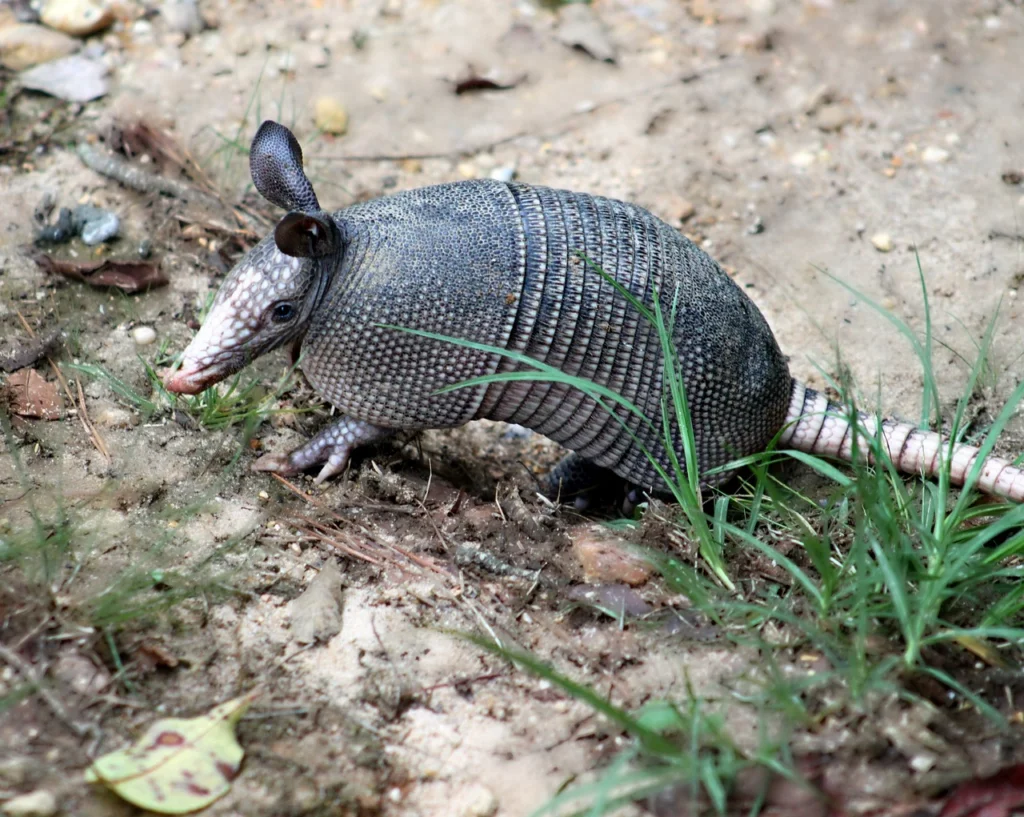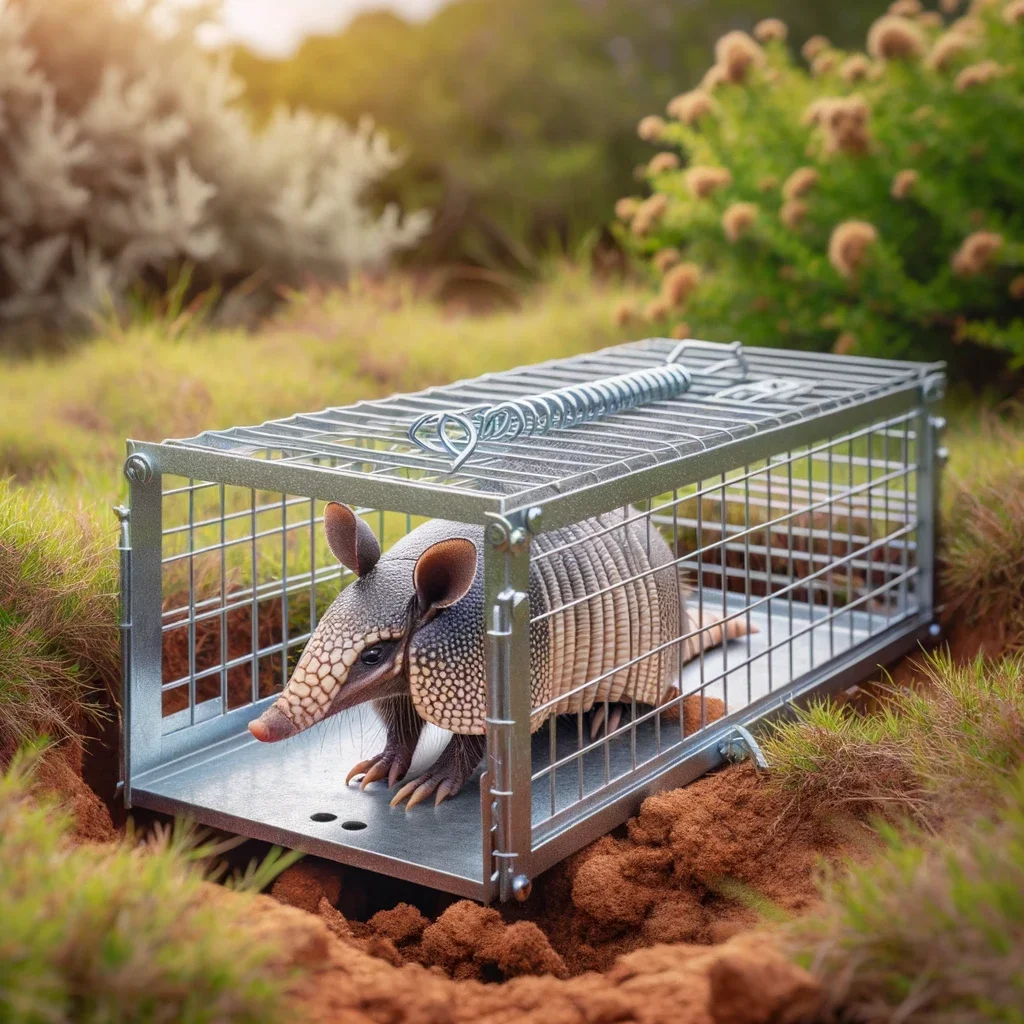
Have you ever wondered how to trap armadillos? Well, you might have if armadillos have destroyed your attractive garden in the past. Armadillo infestation is undoubtedly a gardener’s worst nightmare. Imagine how bad it will be if you have waited long to grow plants, flowers, and thick grass in your garden and an armadillo destroys it in one night.
Armadillos have destroyed many attractive gardens in the past. In fact, they are known for destroying flowerbeds and vegetation as well as digging up big holes in the yards. Once they find an entry point to your yard or garden, they will visit it frequently and turn it into a huge mess. They might be smaller-sized animals, but they are capable of causing a significant amount of damage to your property.
From keeping yards well maintained to installing in-ground fencing, homeowners try various armadillos prevention methods to keep the destructive creatures out of their yards or gardens. However, sometimes the armadillos refuse to leave anytime soon, no matter how much effort the homeowners put in.

Do you fall into a similar category? Consider live-trapping them. Most homeowners take help from a professional armadillo trapping company to trap the animal and relocate it somewhere safe. Others decide to trap the armadillos on their own just to save themselves from paying anything. As armadillo removal experts, at Critters Stop we always recommend the first choice, get some professional help to remove this critter, but if you wanna do it by yourself, you must scroll down to learn how to trap it and what to use as bait.
Live armadillo trapping is undoubtedly one of the most effective methods of armadillo removal. However, as much as homeowners are excited to try it, we recommend seeking some information before doing it.
We have provided thousands of armadillo removal services, and based on that experience we create this step-by-step guide to follow:
Unlike rodents, armadillos are not so small in size. Therefore, to trap them, you will need a medium to bigger-sized trap. According to professionals, a medium to large (30 to 35 inches in length and 12” x 12” entry) trap would be enough to fit in an armadillo. You will have plenty of options on Amazon, Walmart, or any other platform to choose the perfect armadillo trap.
Armadillos are capable of exposing people to a harmful disease called leprosy. Therefore, if you want to avoid direct contact with the animal, you must choose a trap with two doors or one that has a lever at the back of the trap.
If the trap placement is wrong, you will never succeed in catching an armadillo, no matter how great the trap or bait you choose. The key to the right placement of the trap is to find the armadillo burrow.
After a long night of digging and searching for food, an armadillo will hide in its burrow to rest and sleep peacefully. Therefore, you must place a trap near their nesting place. However, tracking down the armadillo burrow might not be an easy task as it seems as the animal digs up at least twelve burrows for itself to hide and rest.
Many homeowners think that using the best bait makes live trapping successful. For many pests, it might be true. However, bait might not work for catching an armadillo as the animal likes to excavate its food from the soil.
However, you can still use their favorite food, such as fruits, vegetables, termites, grubs, and other insects, as bait to lure them inside the trap.
Like other pests, armadillos are active mostly at night. Therefore, the good time to set the trap is in the evening. If the cage is empty the following day, it is better to close it to prevent catching any unwanted critters or stray cats. You can set the trap again later in the evening.
Once you have set up the trap to catch an armadillo, it is time to monitor the trap and wait patiently for the catch. Check the trap every morning to ensure the armadillo does not remain trapped for longer than necessary. It will be inhumane to keep it without food and water for a long time.

Once you have trapped an armadillo, it is time to relocate it far away from your yard or garden. However, to avoid getting infected with leprosy, you must carefully move the trap with gloved hands and release the animal somewhere far away from your garden or yard. When we provide armadillo removal services, we normally drop the animal 10 miles away (minimum) from their capture point.
When releasing the armadillo from a trap, you must stand away from the door, allowing the animal to exit calmly. If the animal takes you as a threat, it may even attack you. Therefore, stand away and hold a stick with you to scare off the animal.

Once you have relocated the animal far away from your yard or garden, you may think your job is finished. However, you still have much to do in your yard or garden. During its stay period, the armadillo will have dug up many burrows that may attract other critters looking for a nesting place. Therefore, to prevent further infestations, you must fill in these burrows with gravel.
An armadillo’s appearance can be frightening too. However, that’s not the only negative when it comes to dealing with armadillo infestation. These destructive creatures can tear apart your garden, scare your pets, and expose you and your family to leprosy.
So, if an armadillo is refusing to leave your yard or garden anytime soon, you must take help from any reliable armadillo trapping service to get them trapped and relocated far away from your yard or garden. Critter Stop is a reliable armadillo trapping company here in Texas. So, what are you waiting for? Give us a call at (214) 234-2616 and make your backyard or garden armadillo-free!
Visit our Critter Library and learn more about our furry friends







